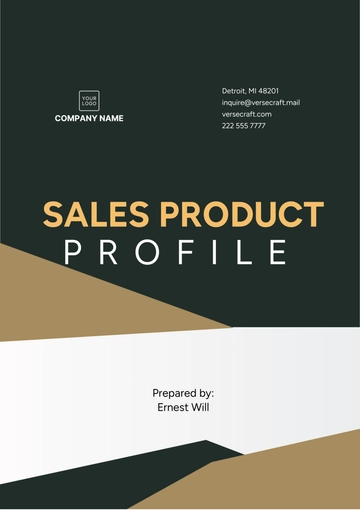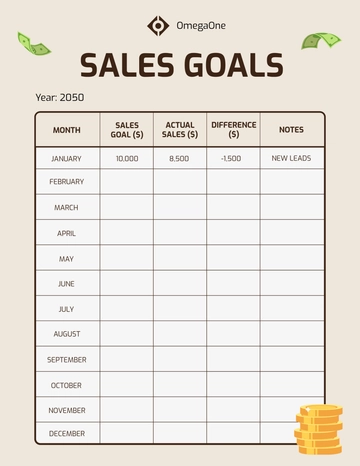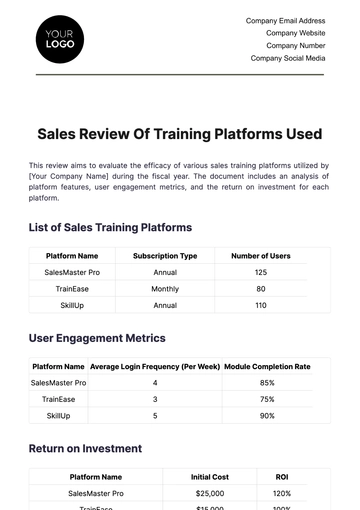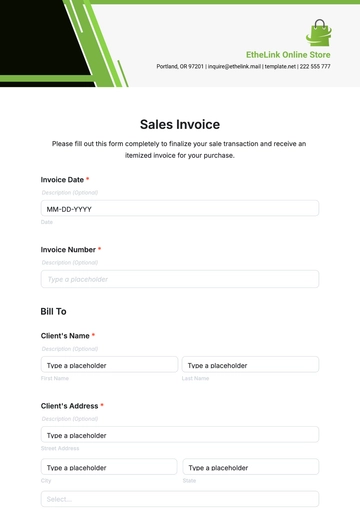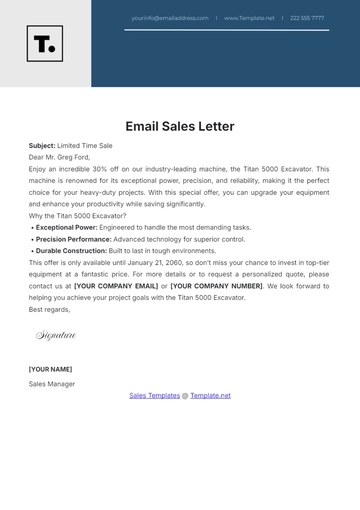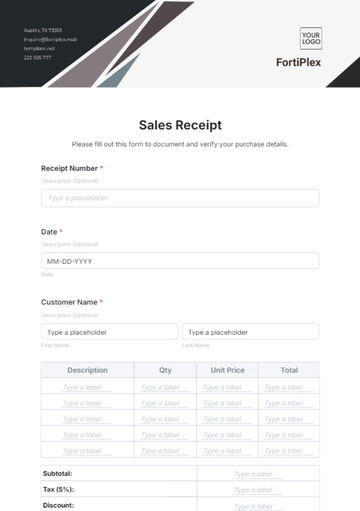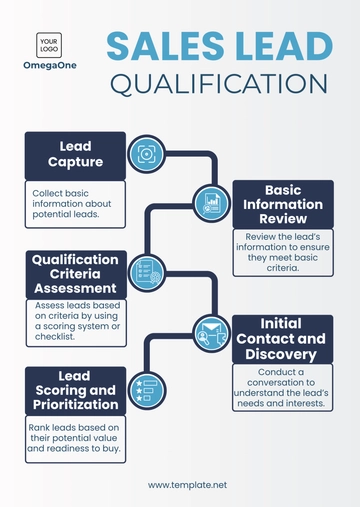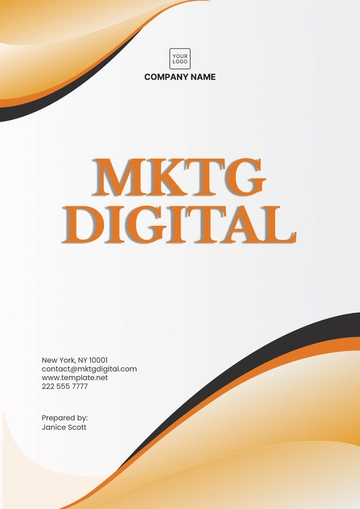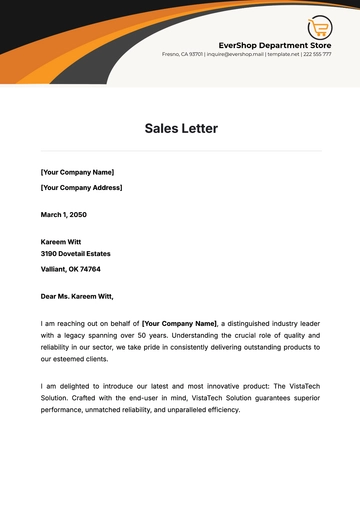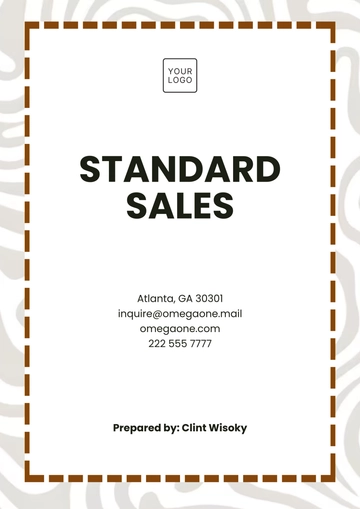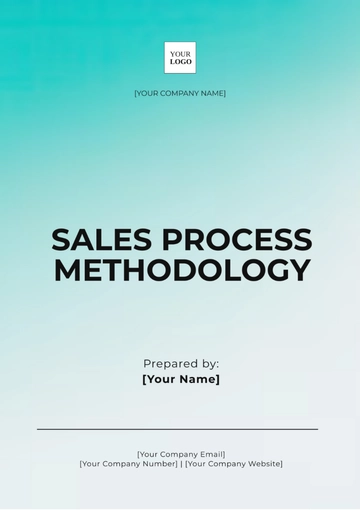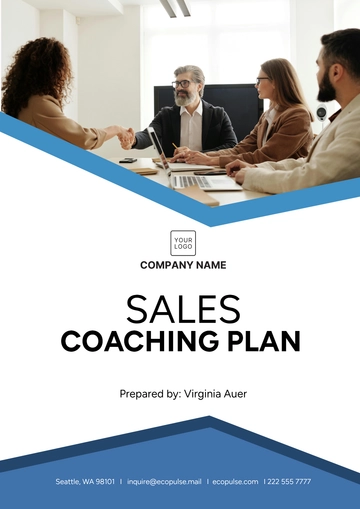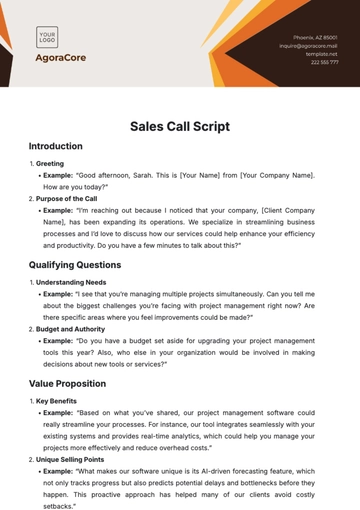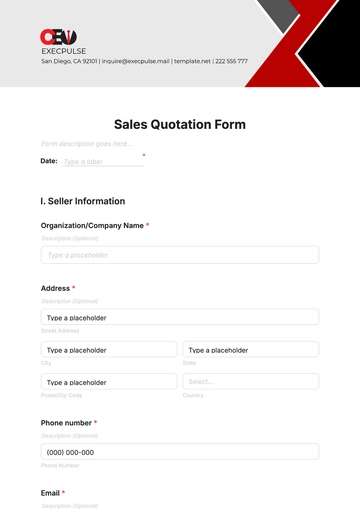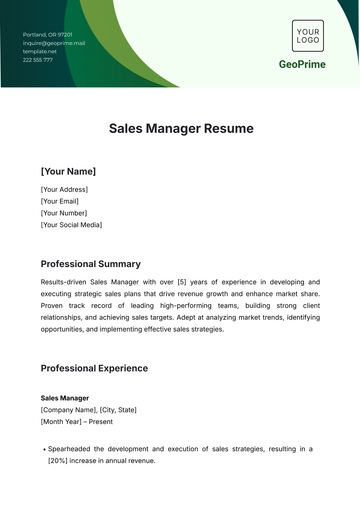Free Sales SOP for Closing Deals
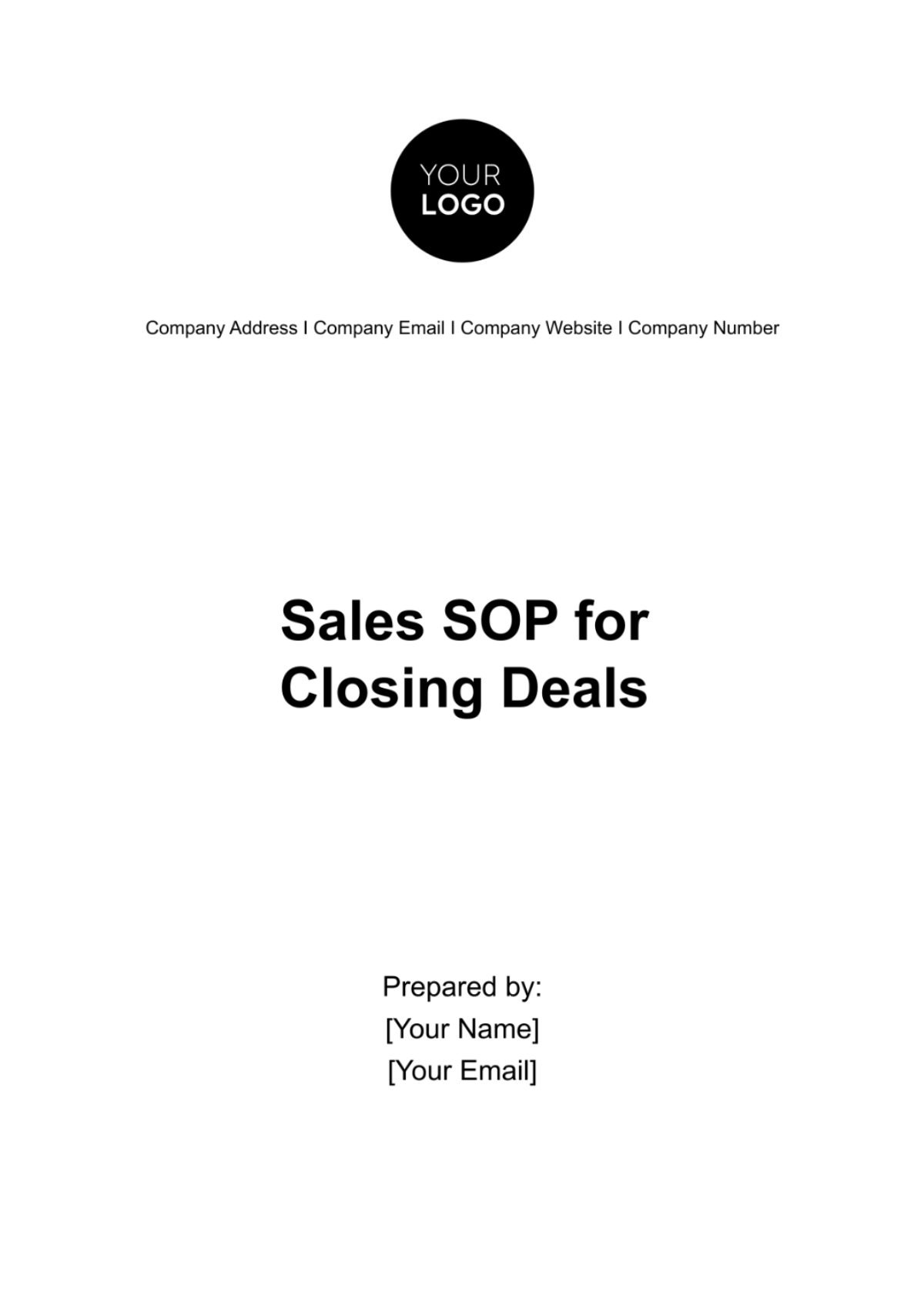
I. Introduction
Welcome to the Sales Standard Operating Procedure (SOP) for Closing Deals at [Your Company Name]. This SOP serves as a comprehensive guide to streamline and enhance our sales closing process within the boundaries of US Sales legal and standard guidelines.
At [Your Company Name], we take pride in our commitment to delivering exceptional products and services to our valued customers. This SOP is designed to ensure that our sales professionals have the tools and knowledge necessary to successfully close deals while maintaining the highest level of professionalism and compliance.
Whether you're a seasoned sales expert or just starting your journey with us, this document will equip you with the essential steps and techniques needed to achieve your sales targets and contribute to the growth and success of [Your Company Name].
II. Objectives
The primary objectives of our sales closing process are twofold:
A. Achieving Revenue Targets: Our foremost aim is to consistently meet and exceed revenue targets set by the company. Closing deals efficiently and effectively is pivotal in sustaining our financial growth and competitiveness.
B. Customer Acquisition: We strive to expand our customer base by acquiring new clients who align with our products and services. Through this process, we aim to build lasting relationships that benefit both our clients and [Your Company Name].
By aligning our efforts with these objectives, we can ensure the continued success and growth of our organization.
III. Preparation
Effective preparation is the foundation for successful deal closures. Sales professionals should follow these essential steps before engaging with prospects:
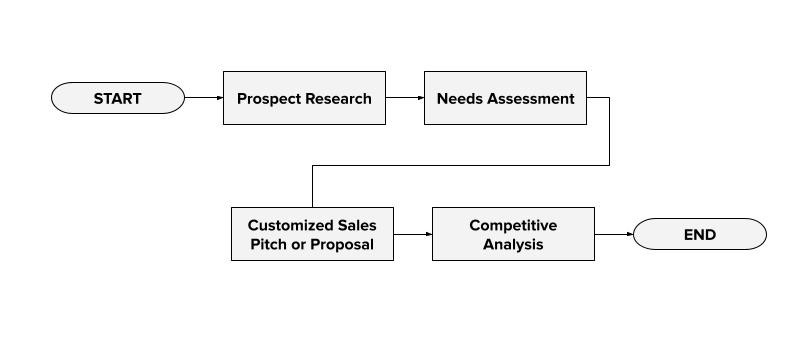 By following these steps, they can ensure they are well-prepared to engage prospects and guide them toward successful deal closures.
By following these steps, they can ensure they are well-prepared to engage prospects and guide them toward successful deal closures.
IV. Prospecting and Lead Qualification
Prospecting and lead qualification are like a compass guiding you to the right opportunities. In this phase, you aim to identify and prioritize leads that align with your product or service. How to do it effectively:
Ideal Customer Profile (ICP): Begin by creating a clear picture of your ideal customer. Consider factors like industry, company size, and pain points. This profile will serve as your reference point.
Data Collection: Gather information on potential leads. Leverage various sources, including databases, social media, and referrals. The more data you have, the better you can evaluate their fit.
Qualification Criteria: Establish specific criteria for lead qualification. Think about aspects such as budget, need, authority, and timeline (BANT). Customize these criteria to match your unique business needs.
Engagement: Reach out to leads through personalized messages and conversations. Use this interaction to assess their interest and willingness to engage further.
Needs Discovery: During conversations, focus on understanding their challenges and needs. Listen actively and ask probing questions to uncover pain points.
Fit Assessment: Evaluate leads based on how closely they align with your ICP and qualification criteria. Assign scores or labels to categorize leads as high, medium, or low potential.
Prioritization: Prioritize your efforts on high-potential leads that are an excellent match for your product or service. These are the prospects most likely to convert.
Nurturing or Disqualification: For leads that don't currently meet your criteria, consider nurturing them for future opportunities. If they are a poor fit, be willing to disqualify them to conserve resources.
By adopting this approach, you'll not only identify promising leads but also focus your energy on those most likely to become valuable customers, increasing your closing rate and sales efficiency.
V. Building Rapport
Establishing rapport with prospects is essential because it lays the foundation for trust and a positive client-salesperson relationship. When prospects feel comfortable and valued, they are more likely to engage and ultimately close deals. Techniques for rapport-building include:
Active listening
Showing genuine interest
Finding common ground
Using the prospect's name
Non-verbal cues like maintaining eye contact and mirroring body language can also foster a sense of connection. Building rapport is not just a sales tactic; it's a genuine effort to understand the prospect's needs and build a mutually beneficial relationship.
VI. Needs Assessment
The needs assessment phase is crucial in understanding the prospect's specific requirements and pain points. Effective questioning and active listening are key components of this process.
A. Questioning Techniques
Open-ended questions: Encourage prospects to provide detailed responses and share their challenges.
Probing questions: Dig deeper to uncover underlying needs and concerns.
Hypothetical questions: Explore potential scenarios to gauge reactions and uncover hidden needs.
B. Active Listening
Pay full attention: Focus on what the prospect is saying without interruptions.
Paraphrase and confirm: Repeat key points to ensure accurate understanding.
Empathize: Show understanding of their challenges and express empathy.
C. Identifying Pain Points
Ask about challenges: Inquire about specific pain points, problems, or goals.
Listen for emotions: Pay attention to the prospect's tone and emotions to understand the depth of their concerns.
Probe further: If a pain point is mentioned, explore it further to grasp its impact and urgency.
D. Documenting Needs
Maintain a record of the prospect's identified needs and pain points.
Link these needs to the benefits of your product or service.
E. Building a Needs Profile
Summarize the prospect's needs, prioritizing them based on importance.
Identify which solutions or features align with these needs.
VII. Solution Presentation
Presenting your product or service as the ideal solution to the prospect's specific needs is a critical step in closing deals effectively. Here's how to do it:
Summarize the prospect's identified needs and pain points. This reaffirms your understanding and shows you've been actively listening.
Tailor your presentation to address their unique requirements. Emphasize how your solution aligns with their challenges.
Showcase the essential features of your product or service that directly address their needs. Explain how these features work and their relevance.
Shift the focus to the benefits the prospect will gain from your solution. Highlight how it solves their problems, saves them time or money, and improves their overall situation.
Share real-life examples or case studies that illustrate successful outcomes for similar clients.
Utilize visual aids like presentations, demos, or product samples to make your presentation more engaging and memorable.
Encourage questions and provide clear, concise answers to any inquiries.
VIII. Handling Objections
Addressing objections effectively is crucial for a successful deal closure. Here are strategies to handle common objections or concerns:
Active Listening: Let prospects voice their concerns fully. Listen attentively without interruption to understand their perspective.
Empathize: Acknowledge their concerns and empathize with their viewpoint. Show that you understand their perspective.
Clarify and Question: Ask open-ended questions to delve deeper into the objection and gather more information. This demonstrates your interest in resolving their concerns.
Educate and Inform: Provide relevant information, facts, or data to address the objection logically. Explain how your solution can mitigate or resolve their specific concerns.
Offer Alternatives: If their objection is valid, suggest alternative solutions or modifications to your proposal that meet their needs.
Social Proof: Share success stories or testimonials from satisfied clients who had similar objections initially.
Trial Close: After addressing objections, ask if they are now comfortable moving forward, using a trial close to gauge their readiness.
Follow Up: If necessary, offer to follow up with additional information or address any lingering concerns.
By addressing objections with empathy, information, and flexibility, you can overcome common objections and move closer to successful deal closure.
IX. Closing Techniques
To encourage the prospect to commit and finalize the deal, various closing techniques can be employed:
Trial Close: Throughout the conversation, intermittently ask questions like "Does this solution meet your needs?" to gauge their readiness for a commitment.
Assumptive Close: Operate under the assumption that the prospect is ready to proceed. Phrases like "When would you like to get started?" prompt them to consider the next steps.
Alternative Choice Close: Offer the prospect two or more options, all leading to a commitment. For instance, "Would you prefer the standard or the premium package?"
Summary Close: Summarize the key points of the discussion, emphasizing how your solution meets their needs. Then, ask if they are ready to move forward.
Urgency Close: Create a sense of urgency by highlighting limited-time offers or benefits, encouraging the prospect to act promptly.
Silent Close: After presenting your solution, remain silent, allowing the prospect time to process and decide.
Puppy Dog Close: Offer a trial period or sample of your product or service, allowing them to experience its value before committing.
X. Follow-up and Next Steps
After successfully closing the deal, it's essential to ensure a seamless transition and maintain a positive customer experience. Here are the steps for post-close actions:
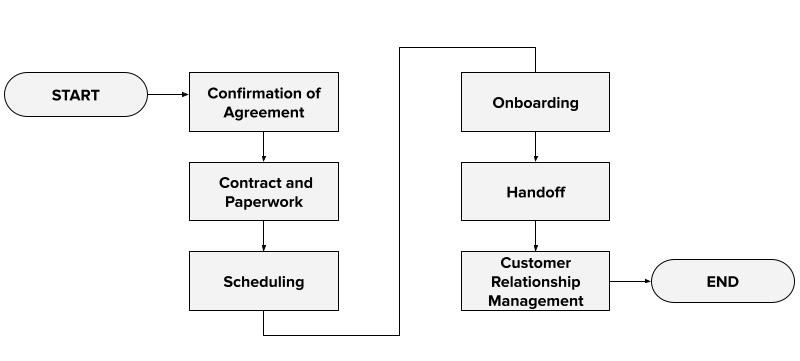
By executing these steps meticulously, we not only honor our commitments but also lay the groundwork for lasting client relationships, driving future growth and success for both parties.
Sales Templates @ Template.net
- 100% Customizable, free editor
- Access 1 Million+ Templates, photo’s & graphics
- Download or share as a template
- Click and replace photos, graphics, text, backgrounds
- Resize, crop, AI write & more
- Access advanced editor
Empower your sales team with the ultimate Closing Deals SOP Template from Template.net. Expertly crafted and fully editable, this customizable resource streamlines your sales process. Utilize our intuitive AI Editor Tool to tailor each step, ensuring maximum effectiveness. Elevate your sales strategy today and watch your conversions soar with our comprehensive SOP solution.

